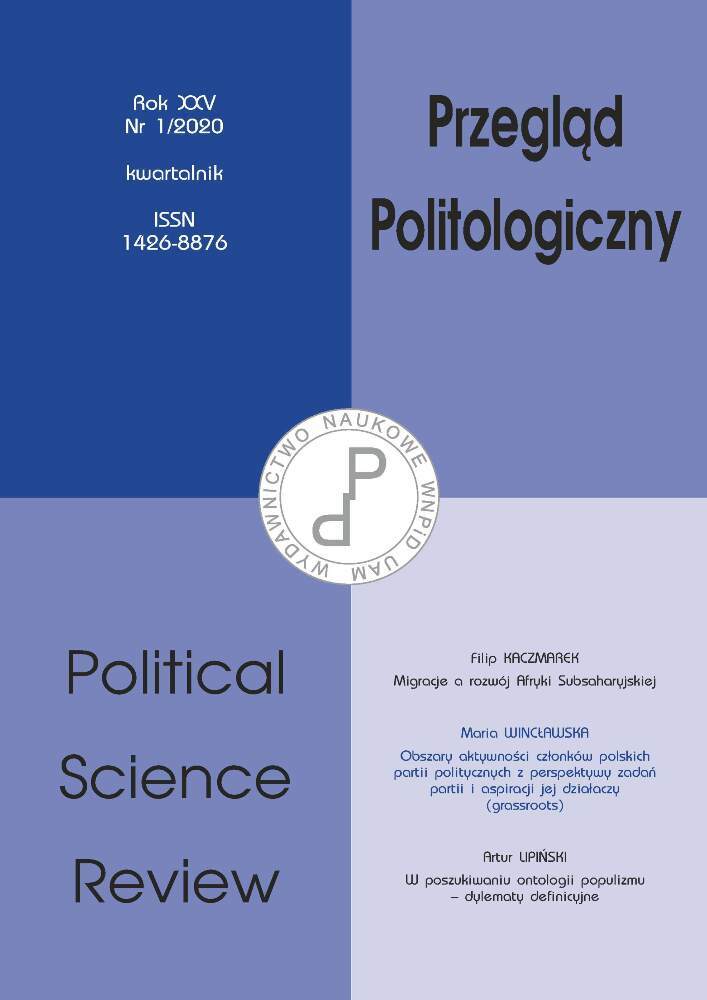Abstrakt
Artykuł ma na celu analizę polityki konsumenckiej w zakresie bezpieczeństwa produktów w Unii Europejskiej po 2002 roku. Rozważania koncentrują się w szczególności na działaniach prawodawczych oraz normalizacyjnych Unii na płaszczyźnie bezpieczeństwa produktów. W artykule dokonano syntezy wybranych aktów prawa pierwotnego i wtórnego Unii Europejskiej w zakresie bezpieczeństwa produktów. W szczególności przedstawiono podstawowe cele polityki konsumenckiej po 2002 roku w kontekście bezpieczeństwa produktów. Wskazano również na role procesu normalizacyjnego na standardy bezpieczeństwa o produktów w Unii Europejskiej. Wskazano na zasadność funkcjonowania systemów RAPEX (Rapid Exchange Information System for Non-food Consumer Products) i RASFF (Rapid Alert System for Food and Feed) przyczyniających się do bezpieczeństwa nabywców. Ostatnia część artykułu pełni rolę konkluzji, zawiera rozważania na temat zasadności oraz rzeczywistego wpływu normalizacji na ich bezpieczeństwo.
Bibliografia
Commission Recommendation of 4 April 2001 on the principles for out-of-court bodies involved in the consensual resolution of consumer disputes, OJ L 109/56, 19.04.2001.
Commission Regulation (EU) No 16/2011 of 10 January 2011 laying down implementing measures for the Rapid alert system for food and feed, OJ UE L6/7, 11.01.2011.
Communication from the Commission to the Council and the European Parliament – Mutual recognition in the context of the follow-up to the action plan for the single market, 16.06.1999, COM/99/0299.
Communication from the Commission to the Council, The European Parliament and the European Economic and Social Committee EU Consumer Policy strategy 2007–2013 Empowering consumers, enhancing their welfare, effectively protecting them, COM(2007) 99, 13.03.2007.
Communication from the Commission of 7 May 2002 to the European Parliament, the Council, the Economic and Social Committee and the Committee of the Regions – “Consumer Policy Strategy 2000–2006”, COM (2002) 208, 7.05.2002.
Council Resolution of 7 May 1985 on a new approach to technical harmonization and standards, OJ C 136, 4.06.1985.
Consolidated versions of the Treaty on European Union and the Treaty on Functioning of the European Union 2012/326/1, OJ EU 26.10.2012.
Dąbrowska A., Janoś-Kresło M. (2007), Konsumpcja w krajach Europy Środkowo-Wschodniej, Polskie Wydawnictwo Ekonomiczne, Warszawa.
Decisions Commission of 16 December 2009 laying down guidelines for the management of the Community Rapid Information System ‘RAPEX’ established under Article 12 and of the notification procedure established under Article 11 of Directive 2001/95/EC (the General Product Safety Directive), O.J. L 22/1, 26.1.2010.
Directive 2001/95/EC of the European Parliament and of the Council of 3 December 2001 on general product safety, O.J. L 11/4, 15.1.2002.
Haidar K. (2005), Konsument dobrem wspólnotowym, „Biuletyn Inspekcji Handlowej”, no. 2.
Hambura S., Muszyński M. (2001), Traktat z Nicei z komentarzem, Wydawnictwo Studio Bielsko-Biała, Bielsko-Biała.
Hoekman B., Kostecki M. (2002), Ekonomia światowego systemu handlu. WTO: zasady i mechanizmy negocjacji, Wydawnictwo Uniwersytetu Ekonomicznego we Wrocławiu, Wrocław.
Miedzińska I. (2016), Nowe podejście do harmonizacji technicznej w Unii Europejskiej a swoboda przepływu towarów, „Przegląd Europejski”, no. 2.
Micklitz H. W., Weatherill S. (1993), Consumer policy in the European Community: Before and after Maastricht, “Journal of Consumer Policy”, no. 3–4.
Nowak S. (2007), Nowe wyzwania i priorytety. Wokół strategii polityki konsumenckiej Unii Europejskiej na lata 2007–2013, „Biuletyn Inspekcji Handlowej”, no. 2.
Pointer S. (2002), Promoting Consumer Confidence in e-Commerce: The ‘Brussels Regulation’ – Real or Illusory Consumer Benefit? The Business Case, in: European Union Lobbying, ed. R. Pedler, New York.
Polski przedsiębiorca w Unii Europejskiej. Wyroby podlegające ocenie zgodności i oznakowaniu CE (2005), Warszawa.
Regulation (EU) No 1025/2012 of the European Parliament and of the Council of 25 October 2012 on European standardisation, amending Council Directives 89/686/EEC and 93/15/EEC and Directives 94/9/EC, 94/25/EC, 95/16/EC, 97/23/EC, 98/34/EC, 2004/22/EC, 2007/23/EC, 2009/23/EC and 2009/105/EC of the European Parliament and of the Council and repealing Council Decision 87/95/EEC and Decision No 1673/2006/EC of the European Parliament and of the Council, L316/12, 14.10.2012.
Regulation (EU) No 254/2014 of the European Parliament and of the Council of 26 February 2014 on a multiannual consumer programme for the years 2014–2020 and repealing Decision No 1926/2006/EC, L 84/42, 20.3.2014.
Regulation (EC) No 1223/2009 of the European Parliament and of the Council of 30 November 2009 on cosmetic products, OJ L 342/59, 22.12.2009.
Regulation (EC) No 882/2004 of the European Parliament and of the Council of 29 April 2004 on official controls performed to ensure the verification of compliance with feed and food law, animal health and animal welfare rules, OJ L 165, 30.04.2004.
Treaty of Nice amending the Treaty on European Union, the Treaties establishing the European Communities and certain related acts, signed at Nice, 26 February 2001 – Contents, O.J. C 80, 10.03.2001.
Wysokińska Z., Witkowska J. (2004), Integracja Europejska. Dostosowania w dziedzinie polityk, Polskie Wydawnictwo Ekonomiczne PWE, Warszawa.

